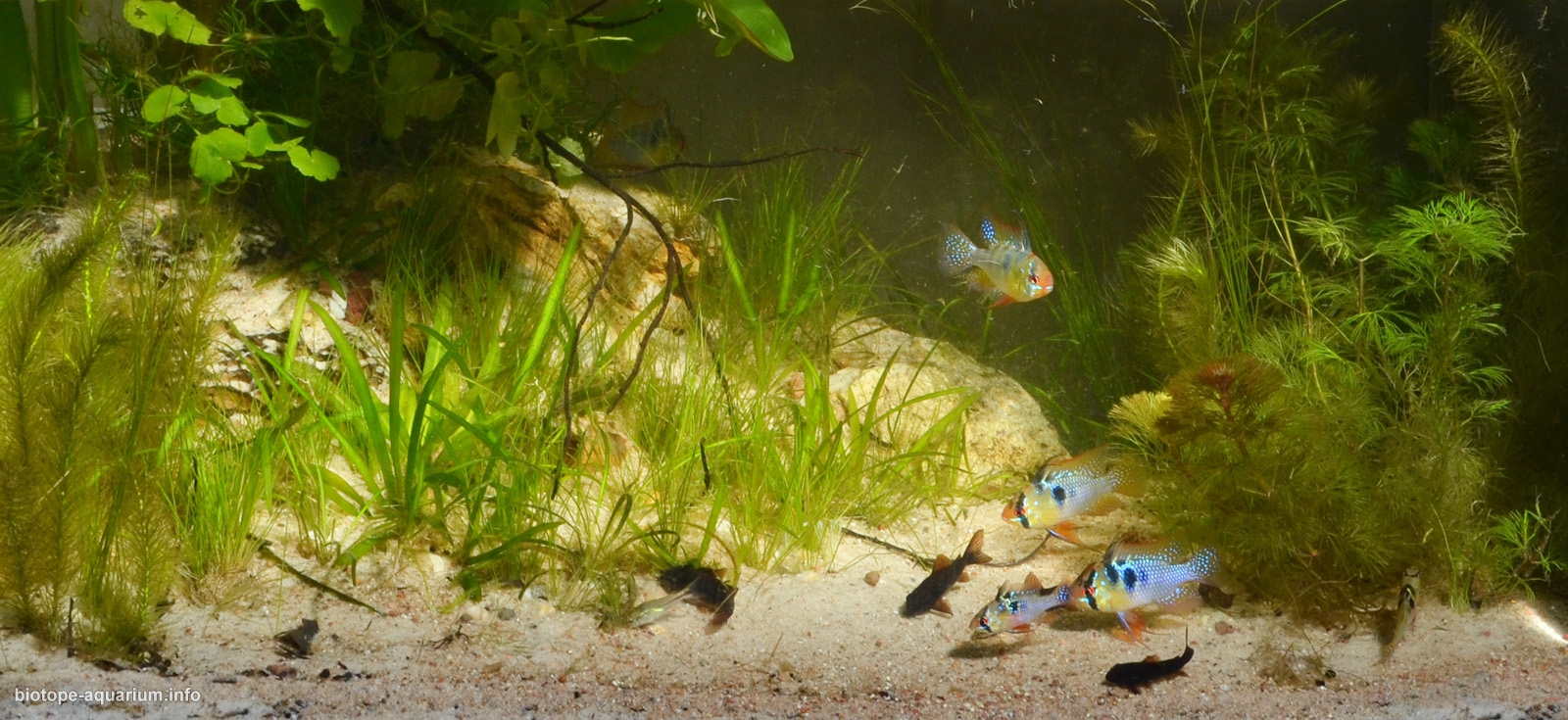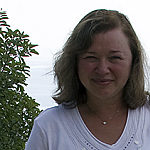Llanos of Venezuela. Biotope for Ramirezis
The 15th place in the qualifying stage of the Biotope Aquarium Design Contest 2013
![]() Russia. Anastasia Melnikova
Russia. Anastasia Melnikova

Volume: 60 L
List of fishes: Mikrogeophagus ramirezi, Сorydoras venezuelanus sp. black
List of plants: Echinodorus tenellus, Echinodorus cordifolius, Echinodorus sp., Cabomba Aqatica, Mayaca fluviatilis, Eleocharis sp., Sagittaria subulata, Hydrocotyle leucocephala
Biotope description: Mikrogeophagus ramirezi is one of the brightest representatives of the American dwarf cichlids, widely popular among aquarists. However, there are some problems with health, reproduction and nutrition when keeping these fishes in aquariums. So I made a biotope aquarium for them based on the studies of their living in the wild. Microgeophagus ramirezi live in shallow small rivers of Orinoco water system in Venezuela, located in the marshy plains – llanos. These water bodies are fully open to the hot sun. The water is clear, slightly yellowish, the flow is slow. In the hot season the water temperature exceeds 30-32°C, and in January is 22-26°C. Seasonal fluctuations of pH are from 4.5 to 7.2, but the water is always very soft (3-4 KH), with low electrical conductivity. Silty bottom is covered with dense thickets of aquatic flora (Echinodorus tenellus, several species of Eleocharis in addition to the ubiquitous Cabomba aqatica, Mayaca fluviatilis, emersed Echinodorus) with a little vegetation-free areas of the bottom covered with clear light yellow sand. Except for Microgeophagus ramirezi this biotope is a home to some Apistogrammas, Hemmigramus, Corydoras venezuelanus sp. black (who likes calm water), etc.

The was done almost perfect to its biotope in nature (although correct name is Mikrogeopgagus ramirezi and the fishes shown were tank bred variants). Wrong is the water temperature (30-32°C maybe on the surface but not where the fish live) and they are never found in a pH of 4.5 and never in 7.2. If the decorator was there, than maybe his measuring equipment was not working well, pH of 5.2 to 6.5 is about correct and 25-28°C also. This is the only placement where I agree with the SA judging results.

It is very beautiful, sunny aquarium. A lot of peaple are in love with the beauty of Microgeophagus ramirezi, but not in many aquariums they live happily ever after. In Internet you can find a lot of complaints about the short lifespan of these fishes, lots of diseases. Many people keep them, but if they create the right conditions? Look closely at this aquarium, it is almost a perfect aquarium for ramirezis. The substrate is a sand, there are plants, where the fishes can find a place to spawn, there is an open space for swimming and open bottom area where they can find food. The neighbors are Corydorases who live in the same biotope with ramirezis. However, there is a pygmy among them, probably by accident, the fish from the same continent, but from a different biotope. I still would like to mention an elaborate composition and a good selection of plants, but more dense Cabomba would be better. The driftwood on the left is excessive, it is better to remove it or to add a couple more to the left. I like the stones mimic the coastline, beautiful texture, it looks well with the sand, but is unlikely to meet the biotope. In general, the aquarium makes a good impression.
